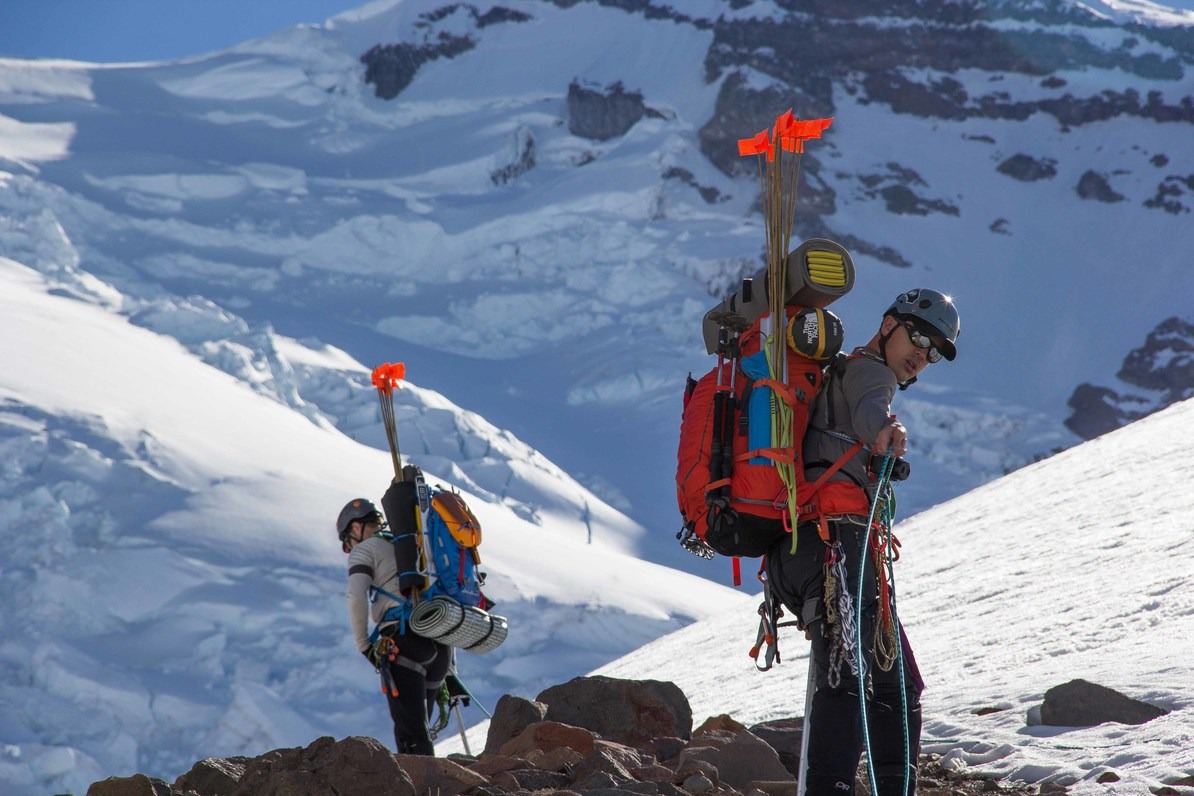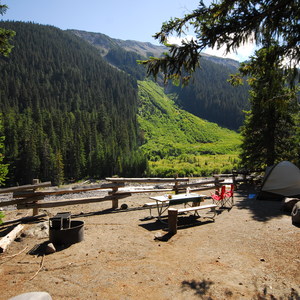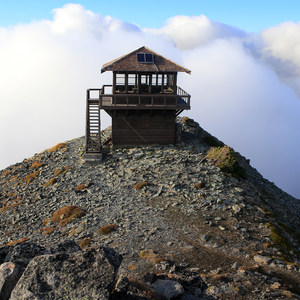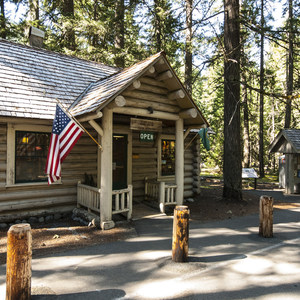You are here
The summit of Mount Rainier sits at 14,410 feet, making it the highest point in the Pacific Northwest. Climbing its peak can be one of the most exhilarating and dangerous experiences of a lifetime. Training for the climb, ascending its steep slopes, crossing crevasses, and being patient and cautious with the weather must all be constantly considered. But standing on Rainier's summit and seeing what you've accomplished can provide a memorable and vitalizing achievement.
Most climbers take three to four days to climb the route, adding in a rest day and leaving a full day for the descent. After procuring the proper supplies, permits, and ensuring you have all necessary training, experience and safety equipment amongst your climbing team, it's time to begin the grueling march. It's a seemingly long walk through the White River Campground from the climber's parking lot to the Glacier Basin Trailhead. You will, no doubt, draw some attention with the copious amount of gear on your back. Once in the woods on the Glacier Basin Trail, you'll be on a gentle climb up a recently restored trail. Following a major flood that damaged the trail in 2006, four years of work resulted in its complete restoration in 2011. The trail is sufficiently wide in most areas to allow climbers to hike side by side. The trail was once a mining road, and several pieces of mining and logging equipment can be seen along the lower trail. Enjoy periodic views of the mountain as you climb toward Glacier Basin and Glacier Meadows camp (the end of the maintained trail), offering an excellent breaking area complete with pit toilets.
The trail then ascends steeply up a dirt ridge before arriving at the headwaters of a fork of the White River below the Inter Glacier. This is where the climb truly begins. The Inter Glacier lies on a steep slope transected by a handful of smaller crevasses. Climbers may prefer to rope up as a team depending on the conditions. As you ascend the Inter Glacier, make sure to turn around and enjoy the views as you make your way Camp Curtis above Mount Ruth. This is considered an overflow camping area if Camp Schurman is full. The ranger-issued permit you received prior to starting the climb will indicate your camping area. This is an ideal staging area for donning crampons and roping up for glacier travel as you make your way down the ridge to the Lower Emmons Glacier. Many crevasses may be open here, but it is a fairly short traverse over and back to Camp Schurman above Steamboat Prow. Note that there is a small and extremely steep climbing trail that drops from near the prow of Steamboat Prow proper that descends directly to Camp Shurman. This trail is exposed, however, and it may not be well suited to some climbers. The more common route is to drop from Camp Curtis to the Lower Emmons Glacier and climb up to Camp Schurman along Steamboat Prow's southern side.
At 9,440 feet, Camp Schurman is one of two permanent climbing bases on Mount Rainier, the other being Camp Muir along the Dissapointment Cleaver route. The ranger cabin may or may not be staffed, and it can be a needed resource for condition updates on the route (note that use of the interior of the ranger cabin is off limits to climbers). By climbing standards, Camp Schurman is a luxurious base camp complete with a newly built solar toilet, generally adequate snow to melt/filter for drinking water, and possibly pre-built tent platforms with wind walls. If the ranger cabin is unoccupied, one can enjoy views of the route from one of two rock hand-built chairs on its porch, but make sure not to overuse or abuse this beautiful shelter or leave anything behind. Also note that, depending on camping permit status, climbing parties may be required to climb another few hundred feet higher on the route to a small plateau known as Emmons Flats.

Nearing Steamboat Prow above Inter Glacier. Photo by Aron Bosworth.
Climbing parties may find it helpful to take a full day to acclimate, rest, and prepare for the summit day. An early alpine start for this route in the very early hours of the morning is typical. Most climbing parties are up by midnight or earlier to be ready to climb by 1 a.m. Prepare all necessary gear and equipment by donning crampons and roping up before leaving camp. One might find climbing in the dark a welcome experience. While you may only be able to see to the edge of your head lamp a few feet in front of you, it's a little easier to ignore the steep slope you're ascending. It can be a bit of a lonely experience because the rest of your team is too far away to talk to on the rope. But once that sun rises behind you and illuminates your surroundings, you'll be taking in the beauty of this majestic alpine landscape.
The standard route leaves Camp Schurman and navigates through longitudinal crevasses, through Emmons Flat, and up to the Corridor, which runs from 10,000 feet to approximately 11,200 feet. The Corridor is the safest route though the obstacles of seracs, icefalls and crevassse along this section of the Emmons Glacier. Small adjustments in route finding will likely be necessary as your team navigates through the dynamic glaciated landscape. Snow bridges will be crossed and crevasses will be jumped - adhere to proper and safe techniques. Continuing above the Corridor, the standard route continues upward trending slightly right and gaining a series of steps while continuing to navigate through crevasses up to the bergshrund around 13,000 feet. Depending on the year's snowpack and season, the bergshrund may be covered adequately to cross it on a snowbridge and continue up to Columbia Crest, Rainier's summit, skirting the saddle between Russell Cliffs and Columbia Crest to its left.
An alternate route can be an option particularly when crevasses and the bergshrund on the Upper Emmons Glacier have increasingly opened later in the climbing season. Below the Emmons bergschrund, climbers can traverse northwest above the Winthrop Glacier and work their way toward a large saddle plateau between the summit slope leading up to Columbia Crest and the peak of Russell Cliff to the north. Liberty Cap rises impressively to the northwest.
Once above the bergrschrund and Columbia Crest and Russel Cliffs saddle, you'll be reminded that this is an active volcano. Sulfur vents can be seen steaming from the summit slope, which will possibly be absent of snow showing a soft scree. Hazards can still exist here, especially when cresting this slope onto the west crater and reaching Columbia Crest. Cornices can cover fractured caves where sulfur steam can pour out. It may be important to remain roped up when crossing the west crater to the summit hump and USGS marker. Enjoy the panoramic views of the nearby cascade peaks: Mount Baker far to the north, Mount Adams to the south, and Mount St Helens to the southwest. The summit can be a busy place as climbers make their way up the more popular Disappointment Cleaver route and cross Columbia Crest, or you may have it to yourself.
Remember, descending from the summit can very well be the most dangerous time of the climb. Keep your focus, rest, and hydrate as needed. Follow the route you followed up and make adjustments as needed depending on the softness of the snow bridges you crossed. It's fairly unbelievable how much climbing up steep slopes occurs in darkness earlier in the day as the route is now exposed in daylight. Though it may be tempting, avoid glissading on the glacier as unseen hazards may exist.
Your team may decide to rest and camp another night before descending down from Camp Schurman. Once off of the crevasse-filled Emmons Glacier, glissading on the Inter Glacier may be possible (and enjoyable!). Enjoy the serenity of the subalpine as you make your way back through Glacier Basin and along the White River to the trailhead.
Information on obtaining permits and other logistics for climbing the Emmons-Winthrop Glacier route can be found here, on the Mount Rainier National Park webpage.
Technical mountaineering skills required for this adventure include proper ice ax and crampon technique, roped glacier travel, and crevasse rescue.
Logistics + Planning
Current Weather: Powered by Dark Sky


































Comments
Sign In and share them.